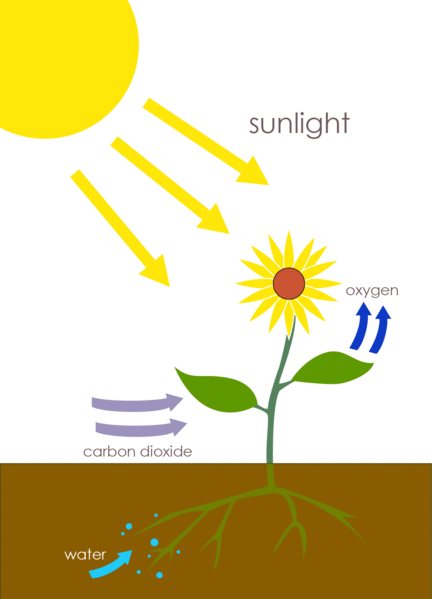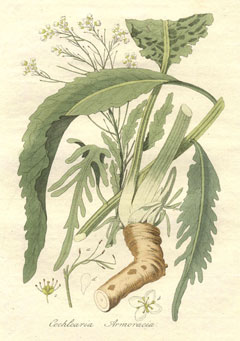Nutrition
This is how the Horseradish plant gets its nutrients.
As with most plants, Horseradish is an autotroph and undergoes
photosynthesis to acquire energy from the sun. Photosynthesis takes
place in the leaves of the horseradish. Light is absorbed through
the green chlorophyll pigment in the leaves. Water is drawn up from
the roots and up the xylem to the leaf, and Carbon dioxide enters
the leaf from the stomata (small openings on the bottoms of leaves
that open and close to exchange gasses). At the end of this process
the plant is left with sugar to be used for generating ATP or
adenosine triphospate. This is the basic molecule for energy in both
plants and animals.
wikimedia commons user A09kg
Once photosynthesis occurs and sugar is made, the sugar is
transported throughout the plant. This is done by the phloem. Phloem
tissue is made up of sieve tube members and companion cells. The
sieve tube members to help move the sugar throughout the plant.
Osmotic pressure from the xylem that is carrying water up to the
leaves, helps force the sugar down to the rest of the plant. In many
plants sugar flows from the leaves down to the roots. In flowering
plants, sugar is needed in the flower. Active transport is used to
push the sugars up to the destination.
Flora batava by Jan Kops wikimedia commons